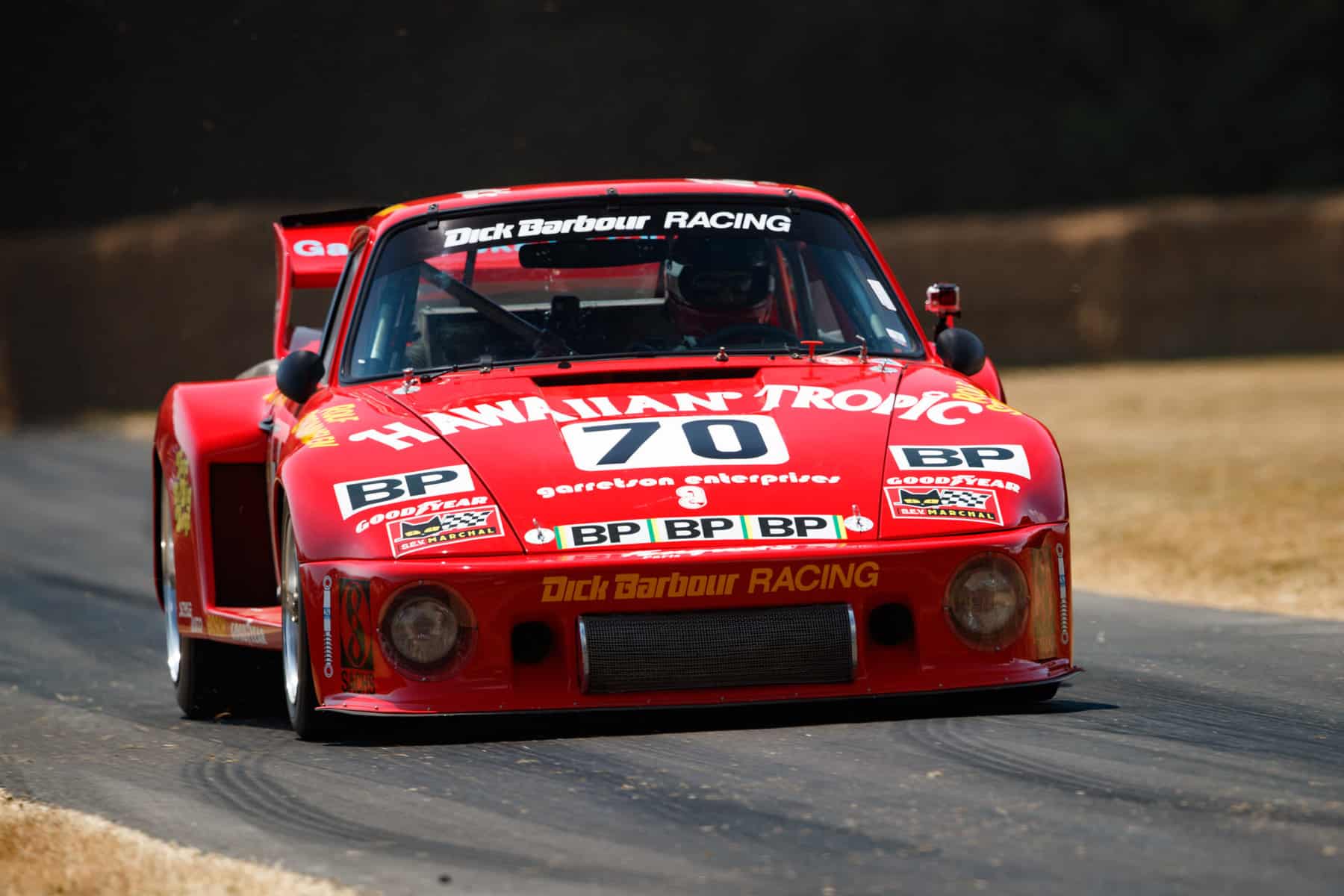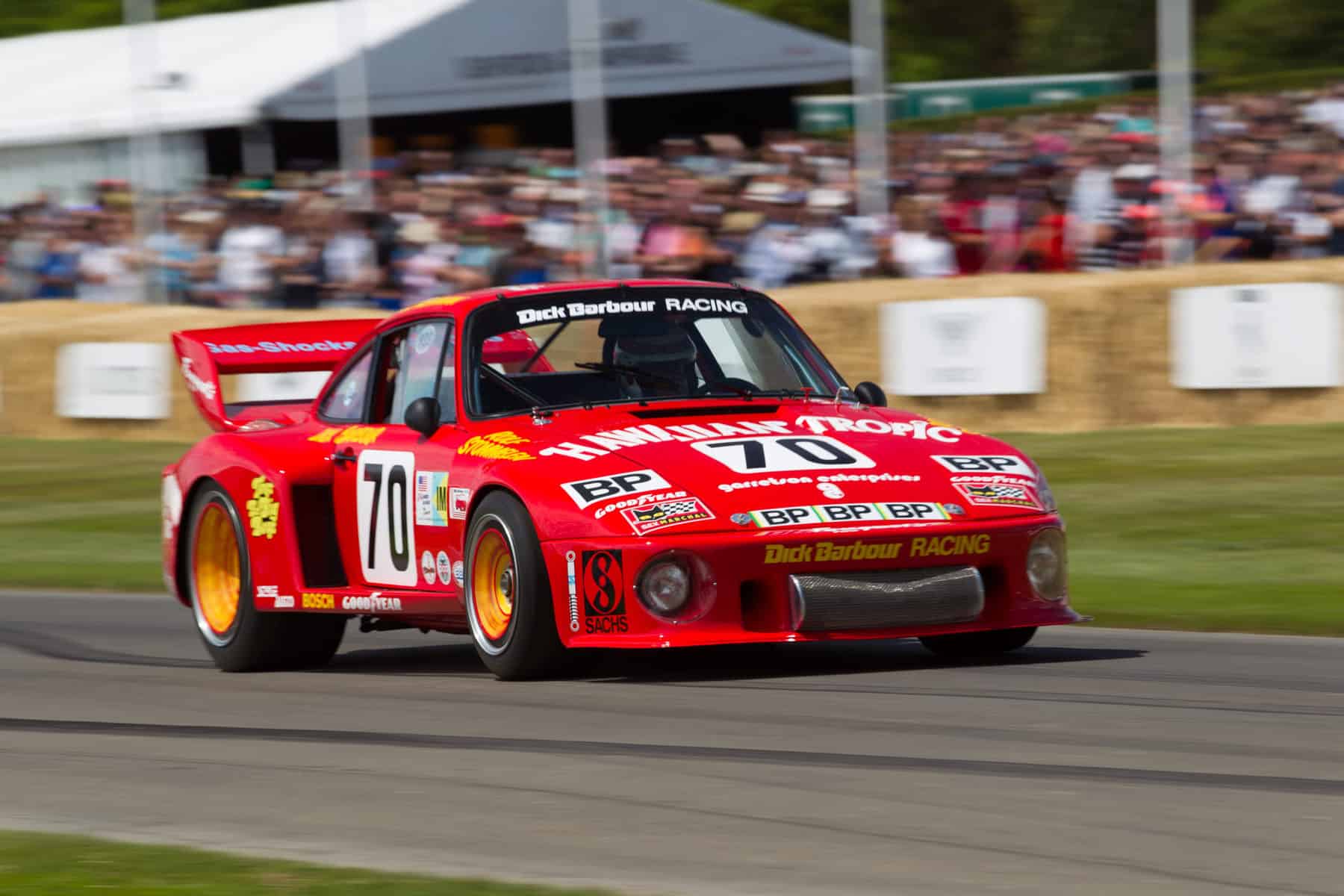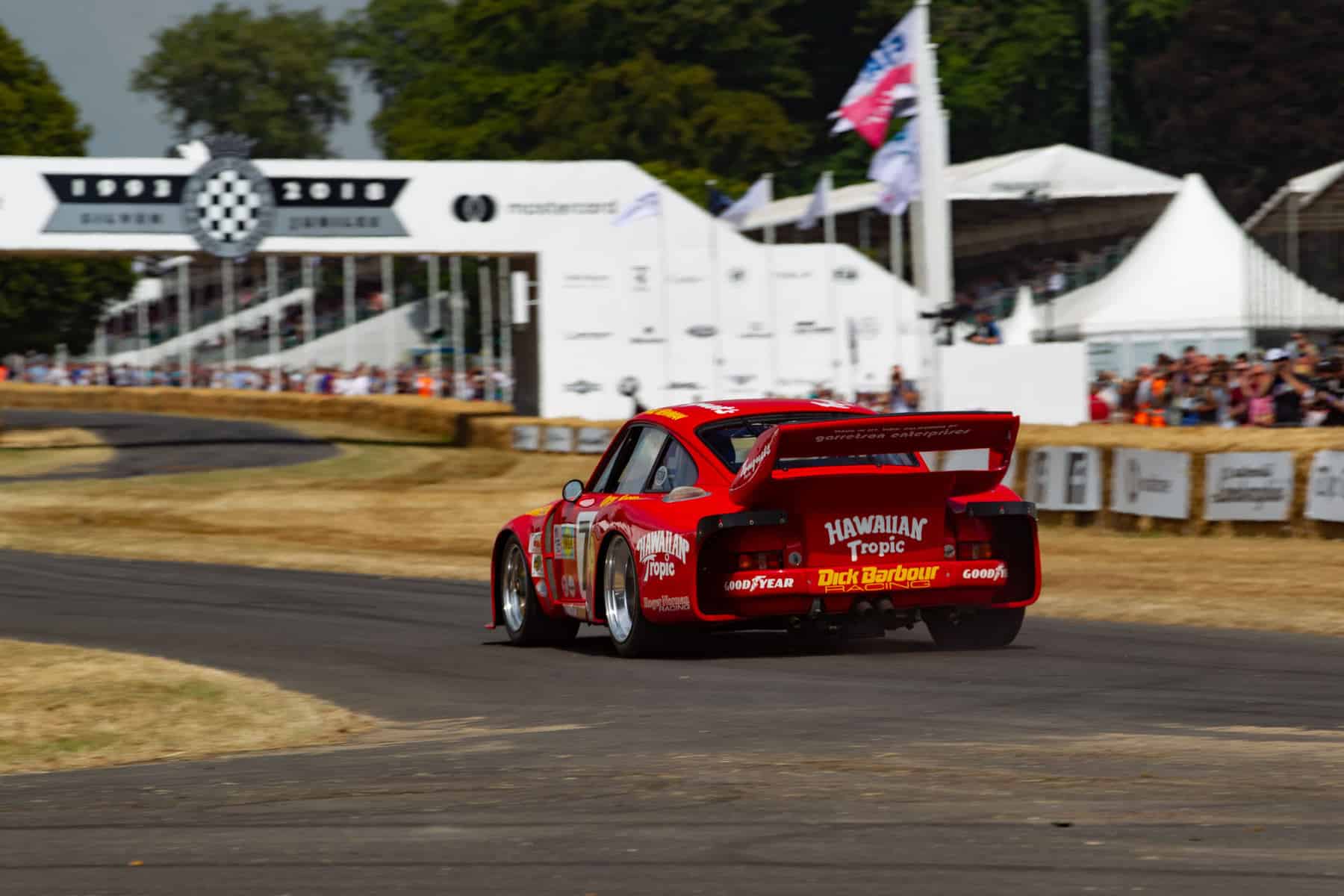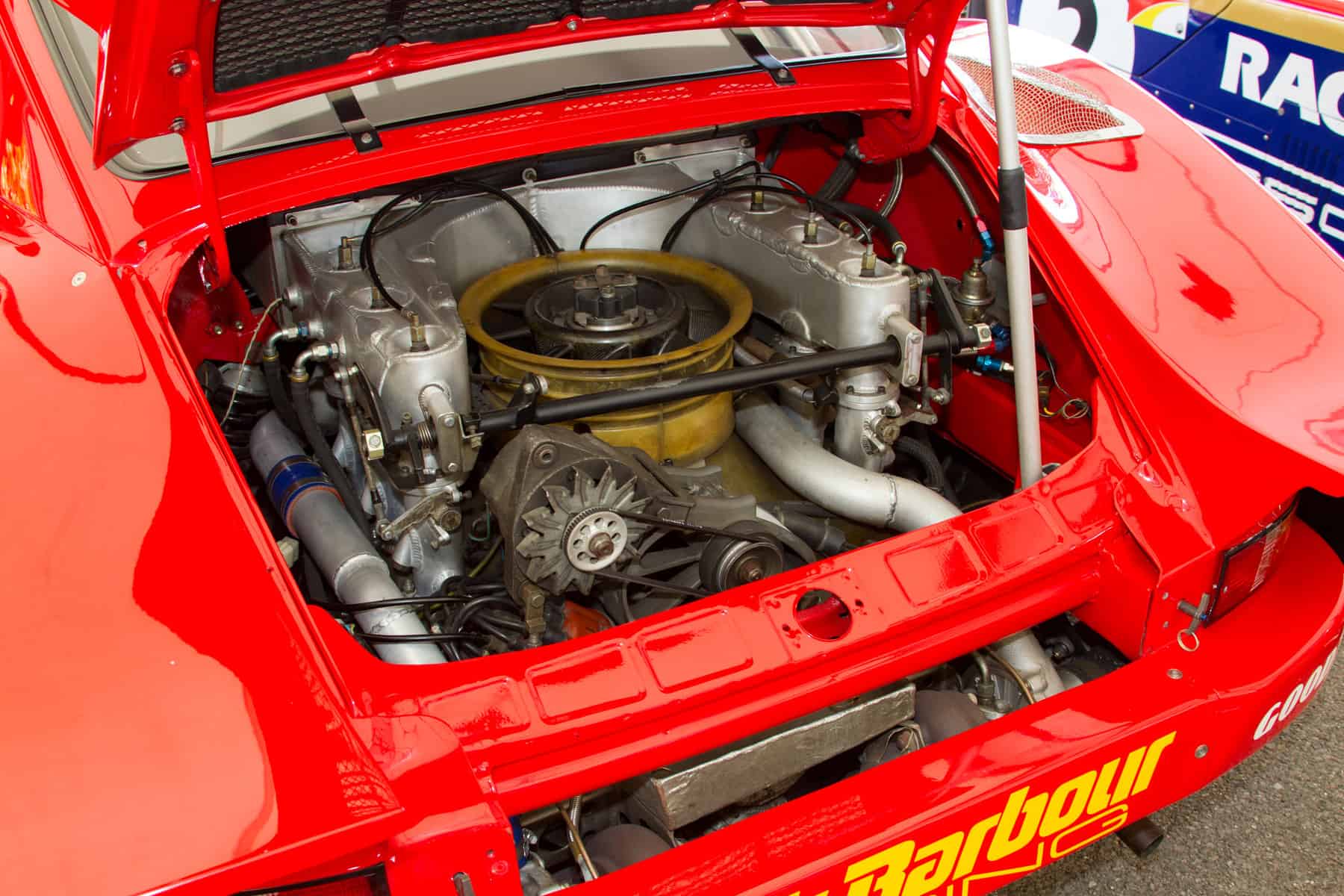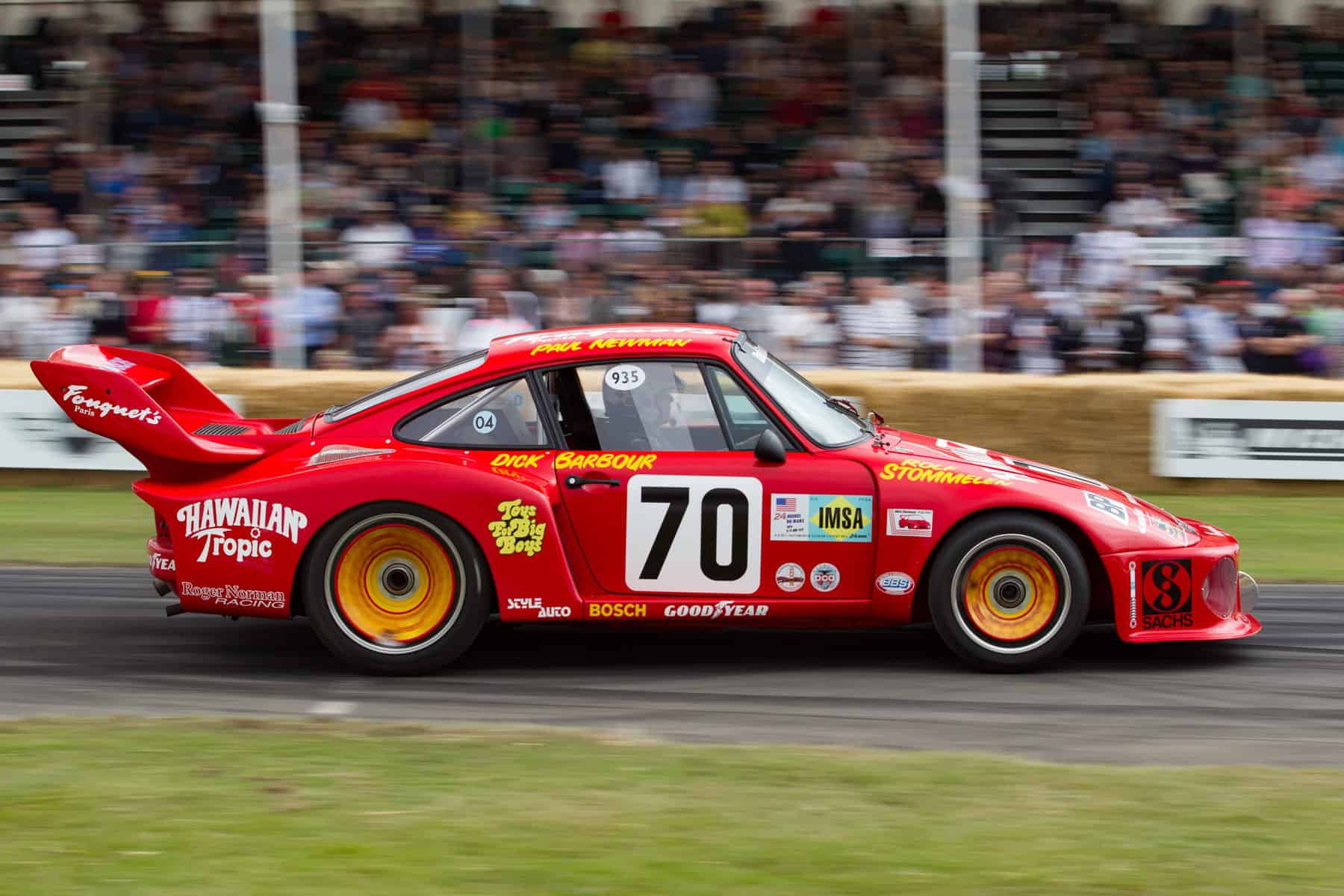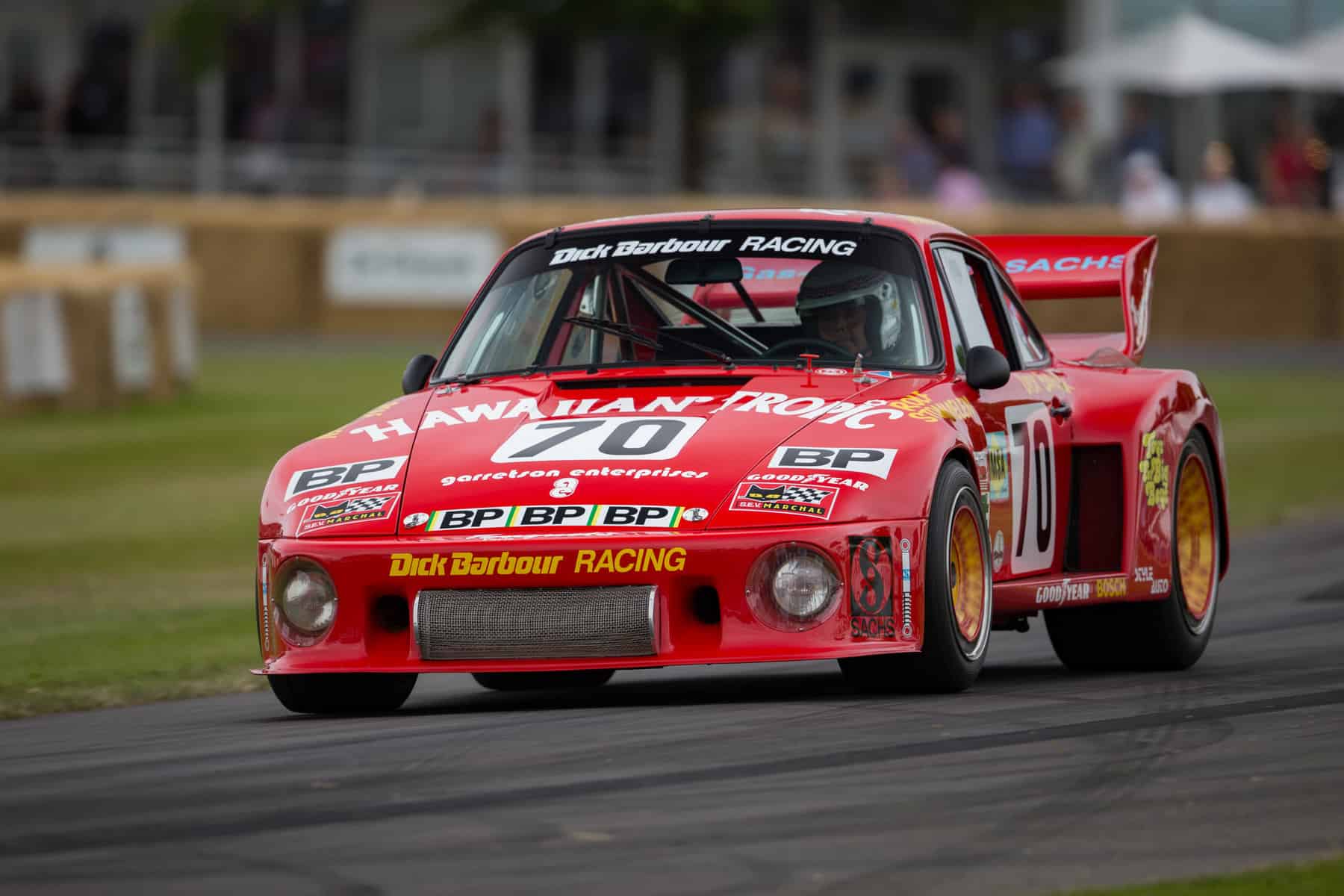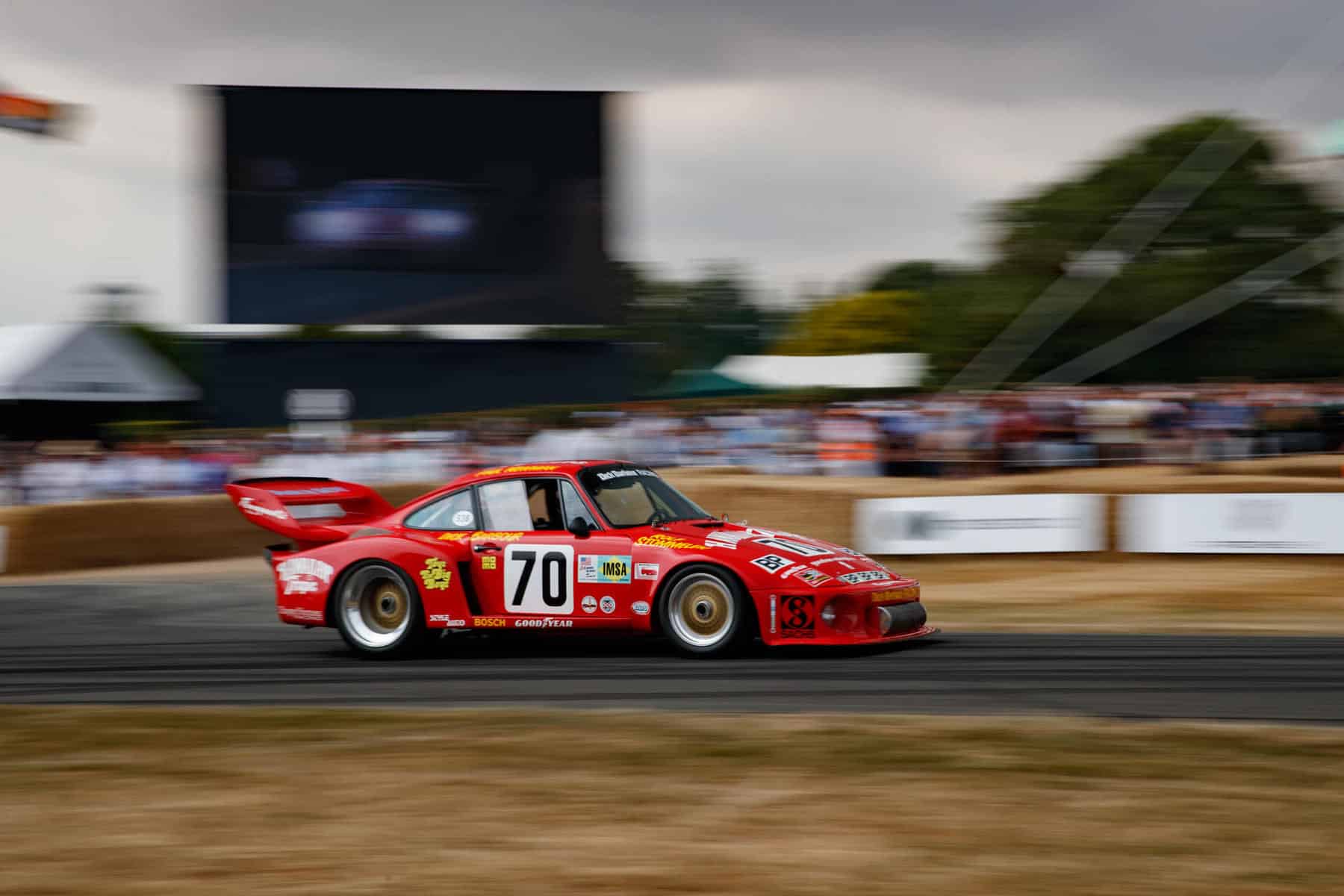Porsche 935
The “Old Warhorse”
WORDS & IMAGES BY: WOUTER MELISSEN
With outright victories at Daytona and Sebring and a second overall at Le Mans in the hands of Paul Newman, this 935 is one of the most successful Porsche GT racers, and it was not even built in Germany!
In period, few people would have realized that it was one and the same car that achieved all these successes. With a contemporary racing career that ran from 1979 through 1986, the vehicle was affectionately and very appropriately known as the “Old Warhorse.”
Strictly speaking, the history of this 935 goes back to 1978 when Dick Barbour Racing campaigned a 935/77A specification car with the serial number 930 890 0033. Its career came to a sudden end when driver Bob Garretson flipped the car in a massive accident at the kink in the Le Mans circuit’s Mulsanne straight. Garretson was largely unharmed but could not recount what happened and chassis 930 890 0033 was completely destroyed. Barbour was keen to replace the car, but Porsche was winding down 935 production and sold him a spare body shell instead. It was tagged 009 0030, indicating it did not leave the factory as a complete car.
Introduced as a works racing car in 1976, the 935 was based on the 911 Turbo road car, known internally as the Type 930. As indicated by the type name, it was built to the relatively lenient Group 5 regulations. Although these required the GT racer to be based on a homologated production road car, only the windscreen, roof, and doors had to be carried over. This left plenty of room to create some of the wildest silhouette racers ever produced. The spectacular appearance of these cars was matched by similar performance, thanks to ever-more-powerful evolutions of the turbocharged flat-6 engine out of the 911 Turbo.
During the 1976 season, the all-conquering 935s were raced exclusively by the Martini-backed Porsche works team. From 1977, the German manufacturer also offered customer cars, which were nearly identical to the factory 935s. Always keen to not only sell complete cars but also spare parts and upgrade kits, Porsche additionally provided the means to customers to upgrade their earlier Group 4 934s to full Group 5 specification. The 935 customer cars were built in three batches with the final seven being completed in 1979. By that time, Porsche had also started offering spare shells for customers to build their own desired specification. As a result, 935s continued to be raced with great success well into the 1980s even though the last one had officially rolled off the production line in 1979.
Among the customers running 935s was Dick Barbour, whose Dick Barbour Racing team operated out of the Garretson Enterprises shop in Northern California. Barbour himself was an accomplished racer and a well-known figure in the Porsche world through his sports and high-performance accessory shop Automotion, based out of San Diego. He briefly also ran his own Porsche/Audi distributorship, which no doubt gave him direct access to all the cars and parts he needed to run his racing team. In 1977, he ran a 934/5 in IMSA events before stepping up to a 935 in 1978. The team fielded three 935s that year on both sides of the Atlantic. Former mechanic Martin Raffauf has fond memories of Dick Barbour Racing: “It was a great team. Most of the team was made up of part-time people who had other jobs and worked at the shop most nights on the cars, after their ‘day job’, me included.”
The 935 that had been destroyed at Le Mans by Garretson was one of two entered by Dick Barbour Racing. Both were new, 1978-specification cars. Nearly identical to the cars raced by the works team the previous season, built to IMSA GTX specification, these featured single-turbo, flat-six engines. In both twin- (Group 5) and single-turbo (IMSA GTX) configurations, the 935/77A dominated the 1978 season with outright wins at Daytona and Sebring, and IMSA and Group 5 class wins at Le Mans. Dick Barbour Racing had quite a hand in that success, scoring a victory in the Sebring 12 Hours with Garretson sharing the driving duties with Brian Redman and Charles Mendez. The surviving car at Le Mans finished fifth overall behind four prototypes and grabbed the IMSA class win.
The often-repeated story was that Barbour only needed a replacement shell, as the team could salvage many components from the wreck but as Raffauf explains this was not the case: “Not much could be carried over from the crashed car, which had rolled over on the Mulsanne at maximum speed. Some gauges from the dashboard, a few suspension bits, and some of the ancillary engine and gearbox parts. Of course we had to crack check everything.” He continues: “I think anything that passed the crack check was used as spares, and the new car built for Le Mans 1979 used mostly new stuff.” Where this work was done was made clear by a decal on the rear wing: “Made in Mt. View, California by Garretson Enterprises.”
With backing from Hawaiian Tropic and BP, the newly built chassis 009 0030 was entered at Le Mans for Barbour himself, who was joined by legendary actor and part-time racer Paul Newman and German ace Rolf Stommelen. The trio had a very consistent race in the bright-red Porsche 935 and eventually finished second overall and first in the IMSA class. They were beaten only by a Kremer-built Porsche 935 K3. With the same line-up on board, the 935 finished second overall in the IMSA Watkins Glen 6 Hours after starting from pole position. The final out for chassis 009 0030 during the 1979 season came at the Road America 500 Miles race. This time, it was raced by Barbour, Brian Redman, and Skeeter McKitterick. After qualifying second, they were classified twenty-third but did not actually make it to the finish.
Over the next winter, chassis 009 0030 was bought from Barbour by Garretson but continued to be run by the same crew. After finishing ninth at Daytona, the car was upgraded from its original specification to a 935 K3. Raffauf explains: “We bought the kit from Kremer to update the car. It included all the bodywork updates, fenders, front air dam, new rear wing, dual rear window piece, pieces along the side bottom of the car below the doors.” There were mechanical changes as well: “The gearbox was turned upside down to lessen the angle on the driveshafts, which allowed lowering the car slightly. Also included was, of course, the air-to-air intercooler. So the whole intercooler water cooling system was removed and replaced with the air-to-air system. So slight modifications to the interior rear cockpit area were needed to fit that all in there.”
Ready in time for the 1980 Sebring 12 Hours, the car received backing from the upstart computer company Apple. Although Steve Wozniak was more of a car guy, Dick Barbour years later explained that Steve Jobs himself was very hands-on when it came to the livery. Joined by Kees Nierop and Bobby Rahal, Garretson finished seventh overall with 009 0030 in its first race as a 935 K3. Now joined by Australian Allan Moffat, Rahal and Garretson also represented Apple Computers at Le Mans but were forced to retire when a piston failed. Rahal then finished second at Sears Point and together with Garretson placing third at Road America. The team’s full-time chief mechanic Greg Elliff fitted the car with a brand-new rear wing that he had made from scratch.
Now entered under the Garretson Racing banner, chassis 009 0030 was fielded at Daytona for Garretson, Rahal, and Redman. At the time, Redman was not aware that he had actually raced the car before but in a different guise: “I didn’t know anything about the history of the Daytona 935! Only that it arrived late at Daytona and was still being finished, meaning almost no practice.” He continues: “I qualified it somewhere around fifteenth, Bobby (Rahal) was jumping up and down saying he could do better, and I just said: ‘Leave it.'” His conservative strategy also worked well in the race: “Around 1 am, Bobby came into the trailer and I asked how we were doing: ‘we’re in the lead’ – I then started to say: “Bobby, I thought I told you…’ when he cut me off saying: ‘I haven’t passed a single car – they’ve all broken down!’”
In an event that is notoriously hard on men and machines, 009 0030 faced very few issues: “The only trouble we had was with a broken header. (I think!) One of the mechanics, Greg Elliff, who was generally not in much of a rush, shot under the 935 and shouting for parts and tools changed the red-hot header in something like fifteen minutes. Other than that, I don’t recall any problems. I think it was this race where I went out of the track on Sunday morning and bought McDonald’s breakfast for the crew!” Garretson, Rahal, and Redman duly won the race outright, beating the closest rival, another 935 K3, by thirteen laps. It was the start of a successful year for Garretson. Although he did not win any more races, he did place second in class at Le Mans. His very consistent results with a variety of codrivers in the World Championship events saw him being crowned World Endurance Champion.
After only a handful of outings in 1982, Garretson sold chassis 009 0030 to fellow Californian Wayne Baker. He was keen to run the car in the IMSA GTO category, which required a comprehensive rebuild to continue to be eligible. Just like rival Chester Vincents did with his 935, it was decided to turn the car into what was referred to as a 934 but was nothing like it. Raffauf explains: “The IMSA rules at that time were quite lax. Note, these cars in no way were equivalent to the original factory Porsche group 4 934 from 1976. They had a lot more power. However, they were still hard to drive, as the allowed tires sizes were small compared to the power, and the car had very limited downforce due to the required bodywork that had to look like a 934.”
Greg Elliff modified the chassis with a new tubular spaceframe structure, replacing the rear section for added rigidity and to allow for revised suspension pick-up points. The same Mountain View shop was again used to build the car for Baker. Crucial to the “934” conversion was the engine. Raffauf: “Our implementation was slightly unique, especially in the engine area. Jerry Woods had designed a twin wastegate system for it as well as some other minor changes like using the KKK K36 turbo (not original 934).” The front and rear bodywork were completely different from before. Gone was the “slant nose” of the 935, replaced with conventional 911 headlights. At the rear, there was no wing but instead a more elaborate version of the Porsche “duck tail.”
Although not a particularly attractive machine and in its fifth season of racing, 009 0030 in “934” guise did prove effective. Now run under the Personalized Autohaus banner, it was driven to an outright victory in the 1983 Sebring 12 Hours and the IMSA GTO Championship. For the 1984 season, it was rebuilt to 935 K3 configuration again and finished fifth at Daytona and fourth at Sebring. In 1985, it was acquired by Chester Vincentz after his 934 was burned at Sebring. He converted 009 0030 back into 934 guise and continued to campaign the car well into the 1987 season. The car’s final contemporary appearance came at the IMSA GT Columbus Ford Dealers 500 Camel Grand Prix where Vincentz started and finished in twelfth overall. After nine seasons, outright victories at Daytona and Sebring, and a second-place finish at Le Mans, the Old Warhorse was finally retired.
Vincentz held on to the car until 2002 and then sold it to Carlos de Quesada still in 934 configuration. Although de Quesada had some notion of what he bought, he only found out the complete story when he talked to Raffauf and Woods. He eventually decided to restore 009 0030 to its original, 1979 Le Mans configuration. Due to the large number of modifications made during its nine-season racing career, this was no straightforward restoration. Tasked with the job was Paul Willison and the car was ready in time for the 2007 Amelia Island Concours d’Elegance. De Quesada also raced the car at select events before selling it on to fellow Porsche enthusiast Carlos Monteverde. He reunited the car with Brian Redman for a demonstration run at the Goodwood Festival of Speed in 2015.
The following year, it was consigned to the Gooding Pebble Beach Auctions. The racing history of 009 0030 was so extensive that it did not actually fit in the catalog. Thanks to its successful career, and as it turned out Paul Newman association, it sold for a hefty $4.8 million. This was nearly twice what was paid for a works 935 just a few years earlier. Chassis 009 0030 is now the centerpiece of the collection dedicated to Paul Newman’s racing career, owned by American comedian and radio DJ Adam Carolla.
